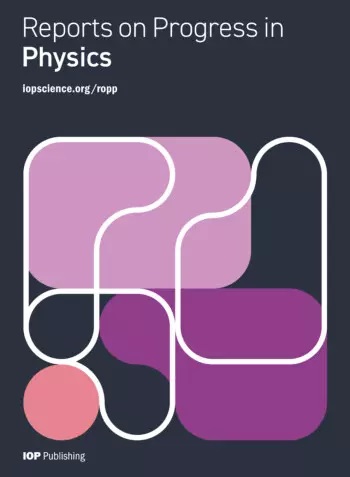δ-钚的动态磁性第一原理自由能模型。
IF 20.7
1区 物理与天体物理
Q1 PHYSICS, MULTIDISCIPLINARY
引用次数: 0
摘要
我们提出了δ-钚(面心立方,fcc)的从头算自由能模型,该模型是由具有动态磁性的完全相对论密度泛函理论(DFT)电子结构导出的。将DFT模型扩展为参数自由轨道极化(OP)机制下的轨道-轨道相互作用,与先前的钚模型一致。Gibbs自由能是由与电子结构的温度依赖性和相应的电子熵、非调和晶格动力学模型中的晶格振动以及磁化密度的动态波动(即磁波动)相关的分量建立起来的。涨落模型由DFT+OP电子结构的温度激发驱动的横向模式和纵向模式组成。因此,从头算模型包含了电子基态以外的波动态。由于动态磁性,该理论预测了优异的热力学性质和吉布斯自由能,符合calphhad和从热力学观测发展起来的半经验模型。磁波动进一步解释了钚中热膨胀的反常行为。具体来说,在室温以上的温度下,δ-钚体系的热膨胀由正向负转变,镓的热膨胀倾向于根据组成减少和消除负热膨胀,高温ε相的热膨胀为正。本文章由计算机程序翻译,如有差异,请以英文原文为准。
εεFirst principles free energy model with dynamic magnetism for δ-plutonium.
We present an ab initio free energy model derived from a fully relativistic density functional theory (DFT) electronic structure with dynamic magnetism for δ-plutonium (face-centered cubic, fcc). The DFT model is extended with orbital-orbital interaction in a parameter free orbital polarization (OP) mechanism consistent with previous modeling of plutonium. Gibbs free energy is built from components associated with the temperature dependence of the electronic structure and the corresponding electronic entropy, lattice vibrations within an anharmonic lattice dynamics model, and dynamical fluctuations of the magnetization density, i.e., magnetic fluctuations. The fluctuation model consists of transverse and longitudinal modes driven by temperature induced excitations of the DFT+OP electronic structure. The ab initio model thus incorporates fluctuating states beyond the electronic ground state. Thanks to the dynamic magnetism, the theory predicts excellent thermodynamic properties and a Gibbs free energy in accord with CALPHAD and semi-empirical modeling developed from the thermodynamic observables. The magnetic fluctuations further explain anomalous behaviors of the thermal expansion in plutonium. Specifically, a thermal expansion for the δ-plutonium system turning from positive to negative at temperatures above room temperature, a tendency for gallium to reduce and remove the negative thermal expansion depending on composition, and a positive thermal expansion for the high temperature ε phase.
求助全文
通过发布文献求助,成功后即可免费获取论文全文。
去求助
来源期刊

Reports on Progress in Physics
物理-物理:综合
CiteScore
31.90
自引率
0.00%
发文量
45
审稿时长
6-12 weeks
期刊介绍:
Reports on Progress in Physics is a highly selective journal with a mission to publish ground-breaking new research and authoritative invited reviews of the highest quality and significance across all areas of physics and related areas. Articles must be essential reading for specialists, and likely to be of broader multidisciplinary interest with the expectation for long-term scientific impact and influence on the current state and/or future direction of a field.
 求助内容:
求助内容: 应助结果提醒方式:
应助结果提醒方式:


